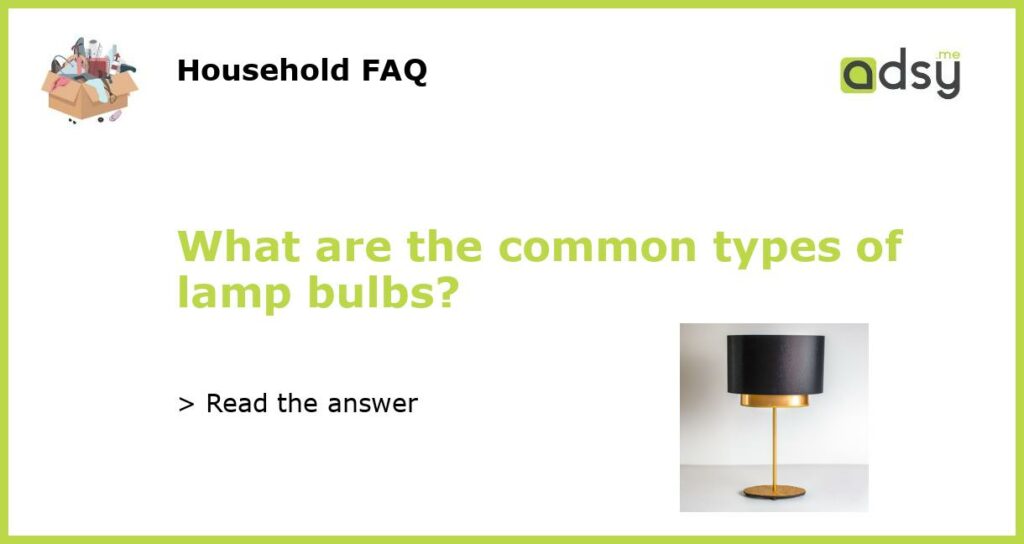Lighting plays an essential role in creating a comfortable, aesthetic, and functional living space. One of the primary components of lighting is bulbs or lamps. Choosing the right type of bulb can positively impact the ambiance of a room. There are several different types of bulbs available, each with its advantages and disadvantages. In this article, we will explore the most common types of lamp bulbs.
Incandescent Bulbs
Incandescent bulbs are one of the most common types of bulbs used in residential settings. They are cost-effective and provide warm, pleasing light. Incandescent bulbs work by emitting light due to the heat generated by a filament. However, they have a low energy efficiency rating compared to other bulb types, and they have a short lifespan. Therefore, the use of incandescent bulbs has been phased out in many countries as they are less eco-friendly than other options.
LED Bulbs
LED bulbs use light-emitting diodes to generate light. They are significantly more energy-efficient than incandescent bulbs, using around 75% less energy. Additionally, they last longer than any other lighting type, up to 25,000 hours or more. LED lights offer dimming capabilities, and they have a range of color temperatures, which allows for various ambiance creation options. However, LED lamps can be more expensive upfront than other bulb types, but the long-term savings on energy bills and replacement costs make them cost-effective in the long run.
CFL Bulbs
Compact Fluorescent Lamp (CFL) bulbs are a type of energy-saving bulb. They operate by discharging ultraviolet light onto a phosphorescent coating to emit light. CFL bulbs use around 75% less energy than traditional incandescent bulbs and last ten times longer. They offer a variety of sizes and color temperatures, including warm, cool, and daylight white. However, CFLs contain small amounts of mercury, which makes them difficult and dangerous to dispose of, although they can be recycled.
Halogen Bulbs
Halogen bulbs generate light by passing electrical currents through a tungsten filament that is housed within a small halogen gas-filled capsule. They are more energy-efficient than traditional incandescent bulbs, offer warm lighting, and can be used in dimming settings. However, they are more expensive and are generally less long-lasting than their LED and CFL counterparts. Additionally, halogen lights generate a considerable amount of heat, making them less eco-friendly and a potential fire hazard if not handled correctly.
Fluorescent Bulbs
Fluorescent bulbs work by ionizing gas to create ultraviolet light that excites a phosphorescent coating. They are commonly used in commercial settings due to their high energy efficiency levels and long lifespans. Prominently featured in stores and offices. fluorescent lamps offer bright, cool lighting, but they can flicker and generate a buzzing sound due to the ballast’s vibrations. Fluorescent bulbs can be difficult to recycle, and they contain small amounts of mercury which make them potentially hazardous to dispose of.






